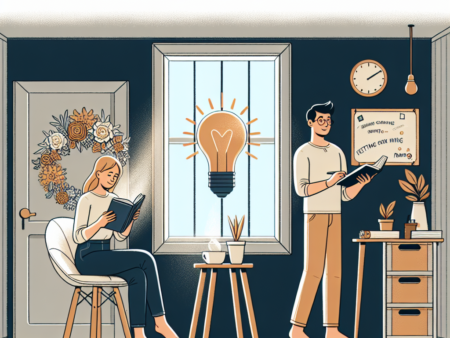Mengubah ruang terbatas menjadi sumber inspirasi kreatif: memanfaatkan potensi tersembunyi untuk menciptakan ide-ide baru.
Menyulap Ruang Terbatas Menjadi Sumber Inspirasi Kreatif
-
Table of Contents
Introduction

Menyulap ruang terbatas menjadi sumber inspirasi kreatif, or in English, “Transforming limited space into a source of creative inspiration,” is a topic that has gained significant attention in Indonesia. With the rapid urbanization and population growth in the country, the availability of space has become a pressing issue. However, Indonesians have shown remarkable creativity in making the most out of limited spaces, turning them into sources of inspiration and innovation. This article explores the various ways in which Indonesians have transformed constrained spaces into creative hubs, highlighting the ingenuity and resourcefulness of the people.
The Challenge of Limited Space
Indonesia, with its vast archipelago and growing population, faces a unique challenge when it comes to space. Urban areas are becoming increasingly crowded, and the availability of land is limited. This scarcity of space has led to the rise of creative solutions to make the most out of what is available.
Vertical Living
One of the most common approaches to dealing with limited space in Indonesia is vertical living. High-rise buildings and apartments have become the norm in urban areas, allowing for more people to reside in a limited area. These vertical structures often incorporate innovative design elements to maximize space utilization. Compact apartments with modular furniture and multi-functional rooms have become popular, catering to the needs of urban dwellers.
Micro Gardens
Another creative solution to limited space is the concept of micro gardens. Indonesians have found ways to incorporate greenery into their living spaces, even in the smallest of areas. Balconies, rooftops, and even walls are transformed into lush gardens, providing a refreshing and calming environment amidst the concrete jungle. Vertical gardens, hanging plants, and potted plants are commonly used to create these micro gardens, adding a touch of nature to urban living.
Inspiring Examples
Kampung Pelangi
Kampung Pelangi, or Rainbow Village, is a prime example of how limited space can be transformed into a vibrant and inspiring community. Located in Semarang, Central Java, this once run-down neighborhood has been revitalized through a creative initiative. The local government, along with a group of artists, painted the houses in bright and colorful patterns, turning the village into a tourist attraction. This transformation not only brought economic benefits to the community but also instilled a sense of pride and unity among the residents.
Art Galleries in Shipping Containers
In Jakarta, shipping containers have been repurposed into art galleries, showcasing the works of local artists. These compact and portable galleries provide a platform for emerging artists to exhibit their creations, despite the limited space available. The use of shipping containers not only adds an element of uniqueness but also promotes sustainability by repurposing existing materials.
Overcoming Constraints through Creativity
The examples mentioned above demonstrate how Indonesians have embraced creativity to overcome the constraints of limited space. By thinking outside the box and utilizing innovative design solutions, they have transformed mundane spaces into sources of inspiration and beauty. This resourcefulness is not limited to urban areas but can also be seen in rural communities.
Compact Farming
In rural areas, where land may be limited, Indonesians have found creative ways to engage in compact farming. Vertical gardens, hydroponics, and rooftop farming are some of the techniques used to maximize agricultural output in constrained spaces. These methods not only provide a sustainable source of food but also contribute to the preservation of traditional farming practices.
Community Spaces
Indonesians have also created community spaces in limited areas, fostering a sense of togetherness and social interaction. Public parks, playgrounds, and recreational areas are designed to make the most out of available land, providing a space for people to gather and engage in various activities. These community spaces play a crucial role in enhancing the quality of life in densely populated areas.
Conclusion
The ability to transform limited space into a source of creative inspiration is a testament to the resourcefulness and ingenuity of Indonesians. Whether it is through vertical living, micro gardens, repurposed shipping containers, or compact farming, Indonesians have shown that constraints can be overcome through creativity. These innovative solutions not only address the issue of limited space but also contribute to the overall well-being and vibrancy of communities. As Indonesia continues to face the challenge of urbanization and population growth, the ability to make the most out of limited space will become increasingly important. The examples set by Indonesians serve as an inspiration for other countries facing similar constraints, showcasing the power of creativity in transforming the world around us.







